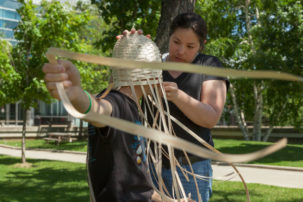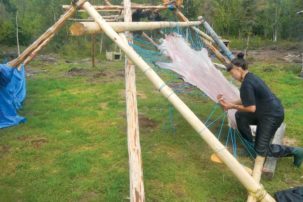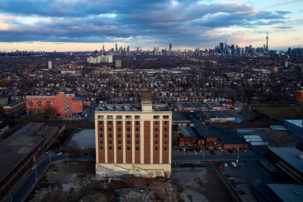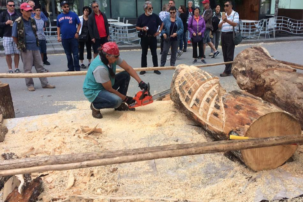Mi’kmaq artist Ursula Johnson, based in Nova Scotia, has won the $50,000 Sobey Art Award. This makes her the first artist from the Atlantic region to win the award, which began in 2002.
The win was announced this evening at the Art Museum at the University of Toronto.
At the museum, the 37-year-old Johnson is currently exhibiting a remarkable installation that reimagines a Maritime moose fence into an eerie, cage-like structure. Programmed lights shift the atmosphere from daylight to dusk within minutes.
“It was definitely a very direct response to the architecture,” Johnson told Canadian Art regarding her Sobey installation earlier this week. “I’ve been wanting to make Moose Fence for a couple of years, but I never found a gallery that had the right intersections.”
This large-scale art gesture signals where Ursula Johnson’s work might be going in future. Earlier in the week, she explained that a prize win would provide her “resources to invest in making bigger pieces and of working with different types of material that I may not have had financially access to before.”
It’s an interesting move for an artist who, to many, is best known for performance.
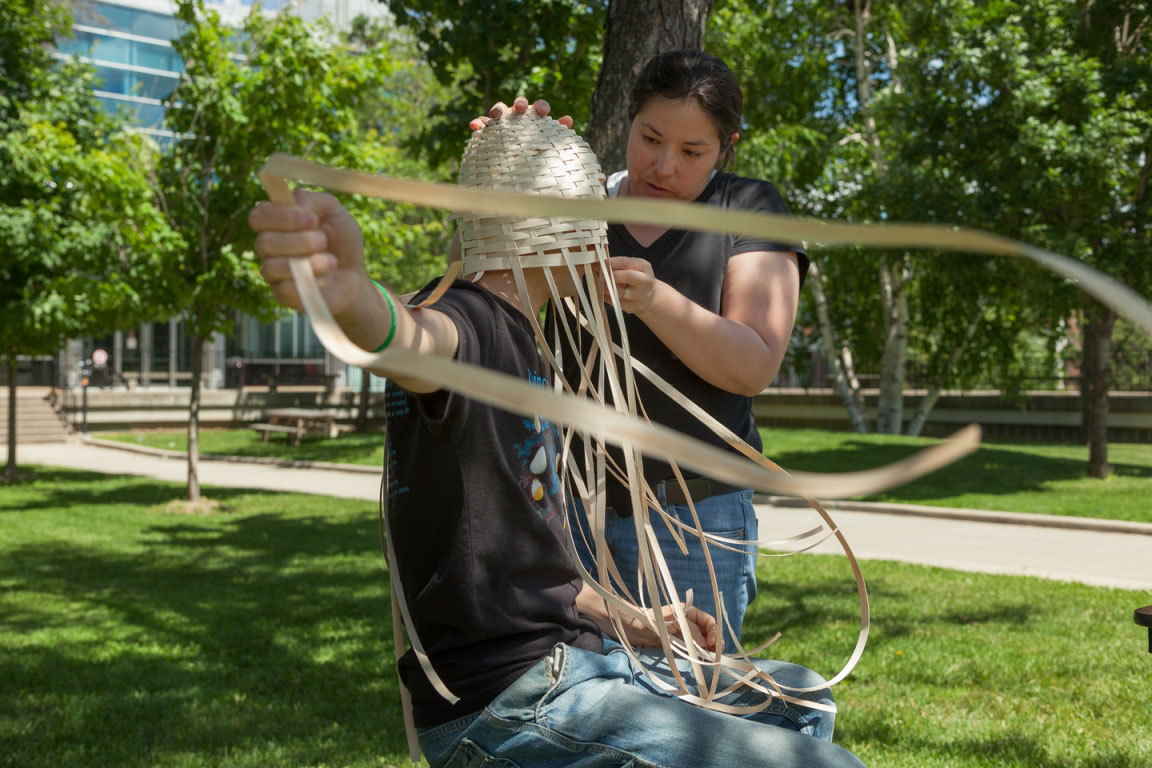 Mi’kmaw artist Ursula Johnson weaves traditional basketry around a volunteer’s body in her 2014 performance L’nuwelti’k (We Are Indian). Image courtesy of Carleton University Art Gallery for “Making Otherwise: Craft and Material Fluency in Contemporary Art,” curated by Heather Anderson.
Mi’kmaw artist Ursula Johnson weaves traditional basketry around a volunteer’s body in her 2014 performance L’nuwelti’k (We Are Indian). Image courtesy of Carleton University Art Gallery for “Making Otherwise: Craft and Material Fluency in Contemporary Art,” curated by Heather Anderson.
Photo: Justin Wonnacott.
In 2011, for her breakthrough performance The Indian Truckhouse of High Art, Johnson “dressed in the traditional clothes Mi’kmaq women would have worn in the early 1800s when they would go to Halifax’s Byward Market to sell their baskets and goods,” as her website puts it. The goods she sold that day were “collected from various discount stores in Halifax” and were considered “culturally appropriated or stereotype perpetuating.”
Between 2003 and 2015, Johnson also did four iterations of Basket Weaving, a durational performance where she weaves a basket around herself.
And in recent years for the itinerant project #callresponse, Johnson has been enacting Ke’tapekiaq Ma’qimikew: The Land Sings, “an audio-based endurance performance that offers an apology to the land for the ways in which our human impact has shaped the landscape and displaced the voices of many Indigenous peoples.”
“I’ve noticed the past couple of years, I’ve been attracted to the architecture of spaces,” Johnson tells Canadian Art. “I’ve been looking at ideas of conservation practices and environmental impact of humans. Now, I’m looking at this idea of the constructed space and environmental impact and how we negotiate space as humans in nature—especially through architecture.”
Johnson says that in future, she also hopes to collaborate more internationally. And that makes sense, as collaboration is one of her hallmarks, too.
“Ursula Johnson was singled out for her strong voice, her generosity and collaborative spirit” a statement from the Sobey Award selection committee read. “Through her work, she redefines traditional materials and re-imagines colonized histories.”
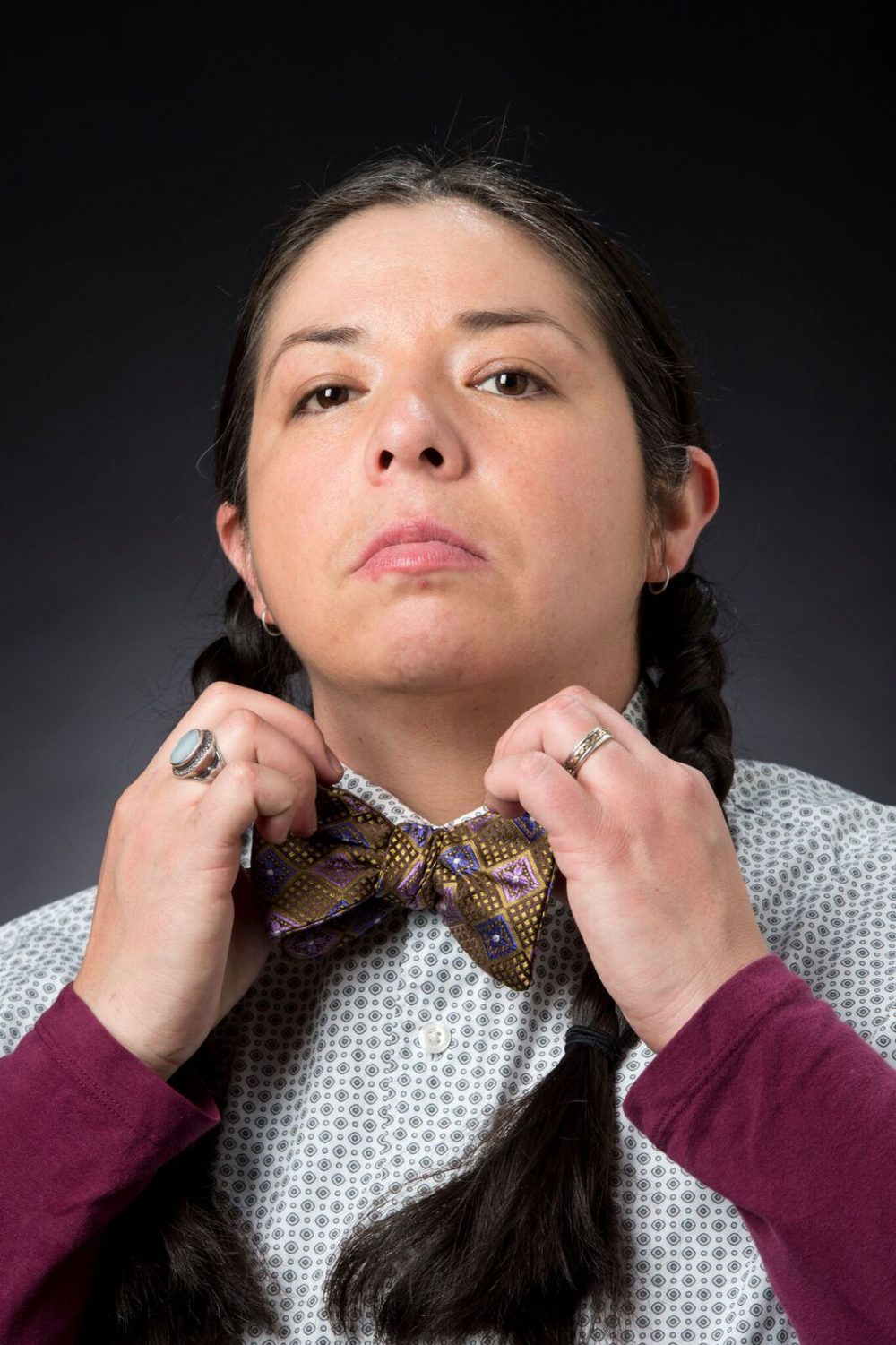 Artist Ursula Johnson.
Artist Ursula Johnson.
Each of the four remaining Sobey Art Award finalists—Raymond Boisjoly, Jacynthe Carrier, Divya Mehra and Bridget Moser—will receive $10,000 each.
Twenty other artists who were longlisted for his year’s prize will also receive $1,000 each.
As part of her prize win, Ursula Johnson will be interviewed on the mainstage at Art Toronto on October 27 at 2:30 p.m.
Art by Johnson and the four prize finalists will be on view at the Art Museum at the University of Toronto until December 9.
The Sobey Art Award is a national prize for artists aged 40 and under. Previous winners include Brian Jungen, David Altmejd and Annie Pootoogook, among others.

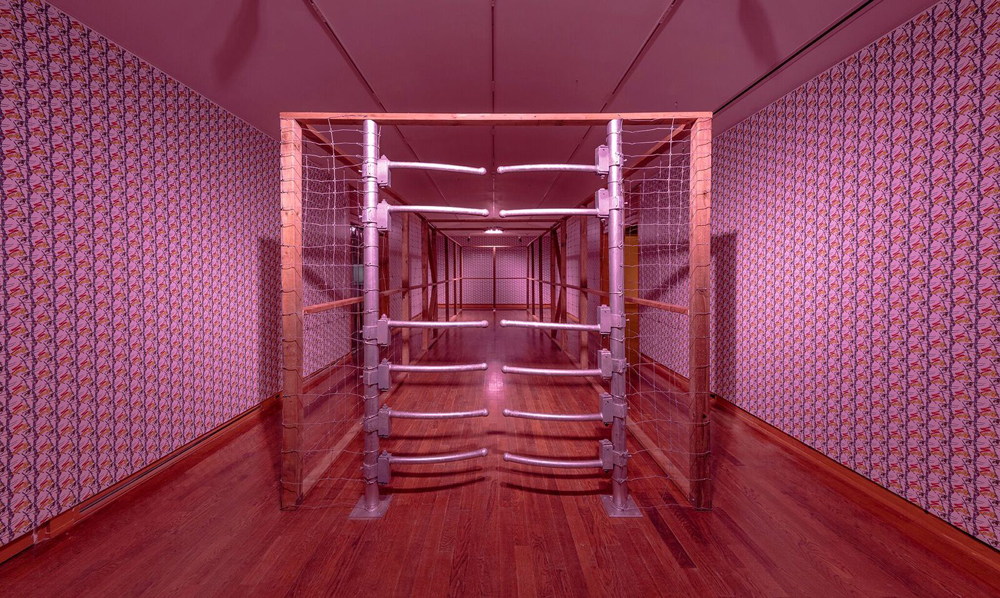 Ursula Johnson, Moose Fence, 2017. Lumber, fencing, ungulate gate, programmed lighting. Installation view at the Art Museum at the University of Toronto.
Ursula Johnson, Moose Fence, 2017. Lumber, fencing, ungulate gate, programmed lighting. Installation view at the Art Museum at the University of Toronto.

